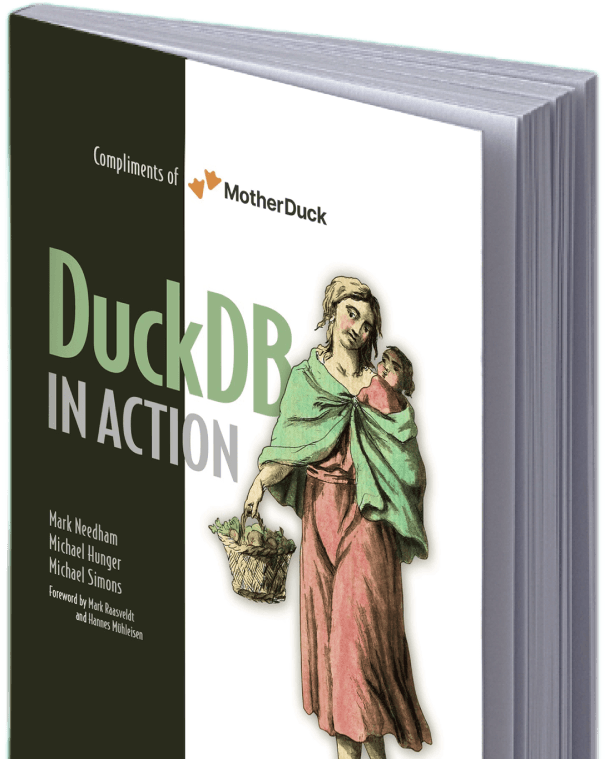2 min read
Building Data Pipelines with DuckDB
This is a summary of a book chapter from DuckDB in Action, published by Manning. Download the complete book for free to read the complete chapter.

The Meaning and Relevance of Data Pipelines
Data pipelines are designed to retrieve, ingest, process, and store data from various sources to create valuable products like dashboards, APIs, and machine learning models. Transformations include joining datasets, filtering, aggregations, and masking confidential data.
DuckDB's Role in Data Pipelines
DuckDB is primarily used in the transformation and processing stages of data pipelines due to its powerful SQL engine and support for various data formats. It integrates well with relevant processing tools and formats, making it versatile within the data ecosystem.
Data Ingestion with dlt
dlt is an open-source Python library that facilitates loading data from various sources into destinations like DuckDB. It automatically infers schemas, handles versioning, and supports multiple sources and destinations, easing the data ingestion process.
Data Transformation and Modeling with dbt
dbt (data build tool) supports data pipeline creation and management through SQL-centric transformations. The dbt-duckdb library connects dbt to DuckDB, enabling modular, documented, and CI/CD-integrated data transformations, outputting results in formats like Parquet.
Orchestrating Pipelines with Dagster
Dagster, a cloud-native orchestration tool, manages data flows in modular pipelines. It defines assets in code, supports data lineage and provenance, and integrates with DuckDB through the dagster-duckdb library, enabling comprehensive pipeline orchestration and dependency management.
Uploading to MotherDuck
MotherDuck offers a cloud service for DuckDB data, allowing easy publishing and sharing of data pipelines. By configuring the pipeline to use MotherDuck, data can be stored and accessed in the cloud, facilitating broader application use and integration.


